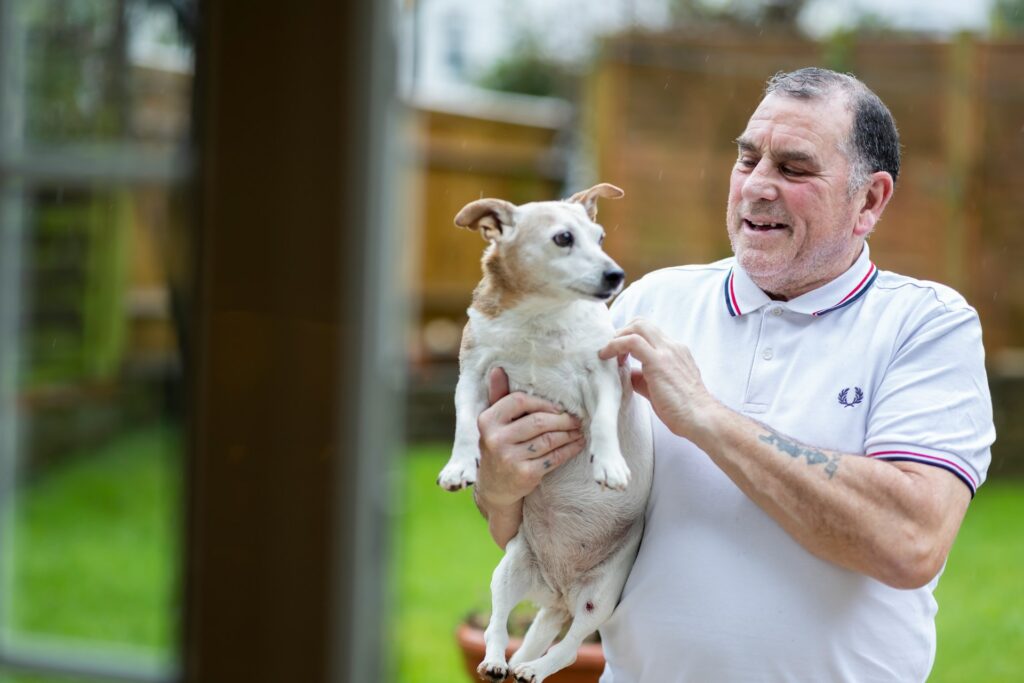Therapy animals play a significant role in enhancing the emotional, physical, and mental well-being of the elderly. These animals, typically dogs or cats, are specially trained to provide comfort and companionship, particularly for older adults dealing with loneliness, depression, or health issues.
The following article explains how, as the population ages, therapy animals have become an increasingly popular and effective tool in improving the quality of life for seniors—especially in care homes, assisted living facilities, and hospitals.
Emotional and Psychological Benefits
One of the primary roles of therapy animals for the elderly is offering emotional support. Many older adults face isolation due to the loss of loved ones, mobility challenges, or living in nursing homes away from family and friends, and the presence of a therapy animal can significantly reduce feelings of loneliness and depression. Animals are non-judgmental companions, providing unconditional love and comfort. This bond can help seniors feel less isolated and more connected to the world around them.
Moreover, interacting with therapy animals can trigger the release of oxytocin, a hormone linked with bonding and stress reduction. This chemical response can promote feelings of happiness and calm, alleviating anxiety and depression, which are common among the elderly. The emotional boost provided by therapy animals is especially beneficial for those suffering from cognitive decline, such as dementia or Alzheimer’s disease. The familiarity of regular visits from a therapy animal can create a soothing environment for these individuals.
Physical Health Improvements
In addition to emotional benefits, therapy animals can contribute to the physical health of the elderly. Studies have shown that interacting with animals can lower blood pressure levels, reduce heart rate, and decrease levels of cortisol, a stress hormone. This can be particularly valuable for seniors with heart conditions or hypertension, helping to create a more relaxed state and potentially reducing the risk of cardiovascular problems. First-rate care homes, such as St. Peters Care Home serving Bury St Edmunds, often bring in therapy animals into their facilities to work with the residents.
Therapy animals also encourage physical activity. For example, if the therapy animal is a dog, seniors may be more likely to engage in light exercise, such as taking short walks, which can improve mobility and joint flexibility. Even gentle activities, like petting or brushing the animal, can provide seniors with physical stimulation, improving hand-eye coordination and motor skills. This is especially important for those who are less mobile but still need to stay active.
Cognitive Stimulation
For elderly individuals experiencing cognitive decline, such as those with dementia, therapy animals can offer cognitive stimulation. The routine of interacting with an animal helps provide structure and consistency, which can improve focus and memory recall. Seniors are often encouraged to remember the animal’s name, participate in its care, or engage in playful activities, all of which can help stimulate mental processes.
The non-verbal communication required when interacting with an animal can also be beneficial for elderly people who struggle with verbal communication or memory. Therapy animals provide an opportunity for these individuals to express themselves in alternative ways, often through touch and facial expressions, fostering a connection that doesn’t rely on language.
Social Interaction and Community Engagement
Therapy animals can also serve as a bridge to social interaction. In group settings like care homes or community centers, therapy animals often bring people together, encouraging conversation and bonding over shared experiences. This can foster a sense of community among seniors, helping them build relationships with one another. Even for individuals who are typically withdrawn, the presence of an animal can be an effective icebreaker, encouraging them to engage with others in a relaxed and informal setting.
Therapeutic Effects for Various Conditions
Therapy animals have been found to be particularly helpful for elderly individuals dealing with specific health conditions. For those with chronic pain or recovering from surgery, animals can provide a comforting distraction, helping to reduce the perception of pain. For seniors living with mental health conditions like depression or anxiety, therapy animals offer companionship that helps counteract negative emotions, boosting overall mental health.
Conclusion
The role of therapy animals in the lives of the elderly is profound and multifaceted. These animals provide not only companionship but also emotional, physical, and cognitive benefits. By reducing feelings of loneliness, improving physical health, and stimulating cognitive function, therapy animals enhance the quality of life for elderly individuals, particularly those in long-term care facilities or facing health challenges.
As the demand for supportive care options for seniors continues to grow, therapy animals will likely play an increasingly vital role in elder care.



